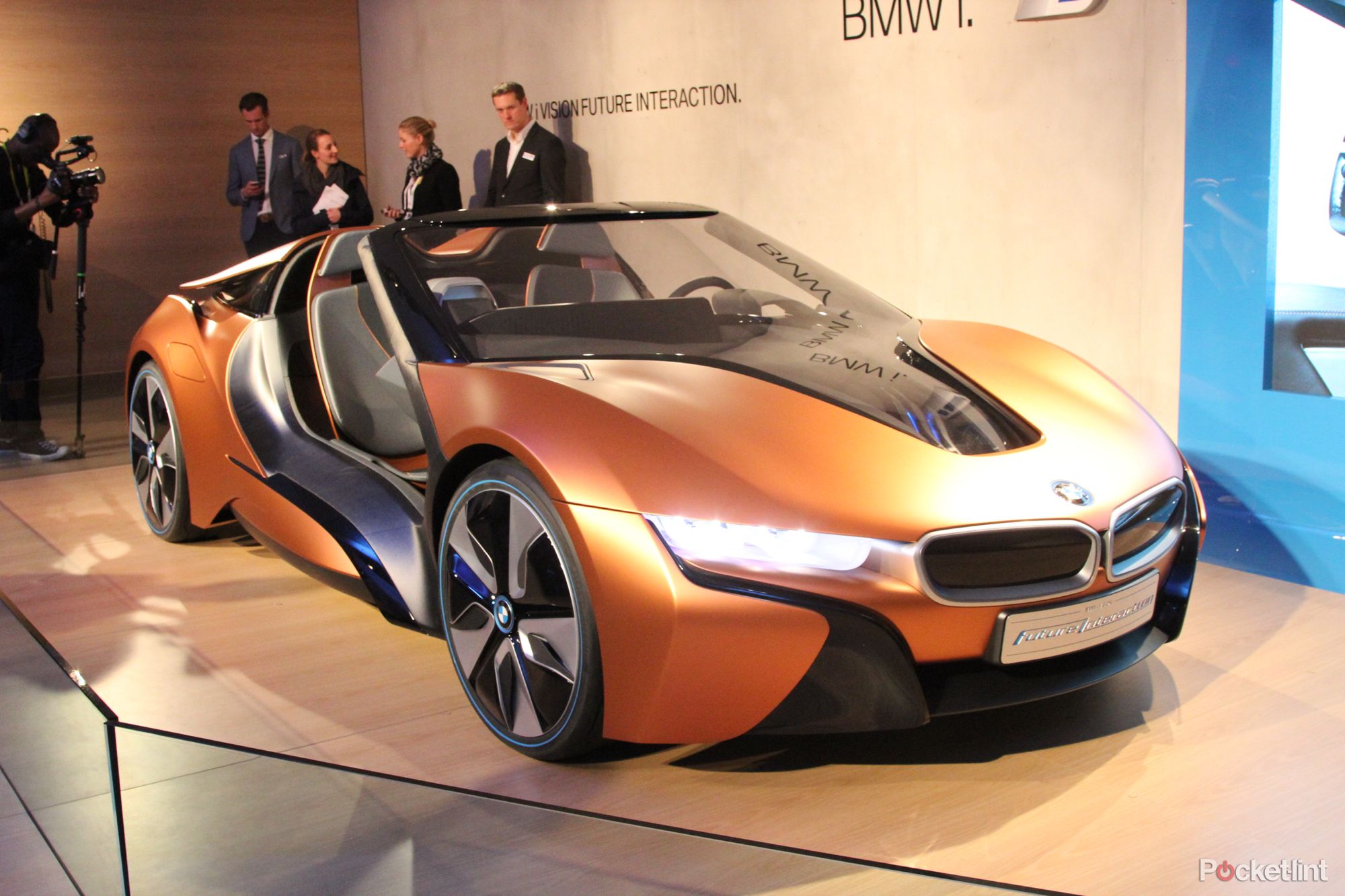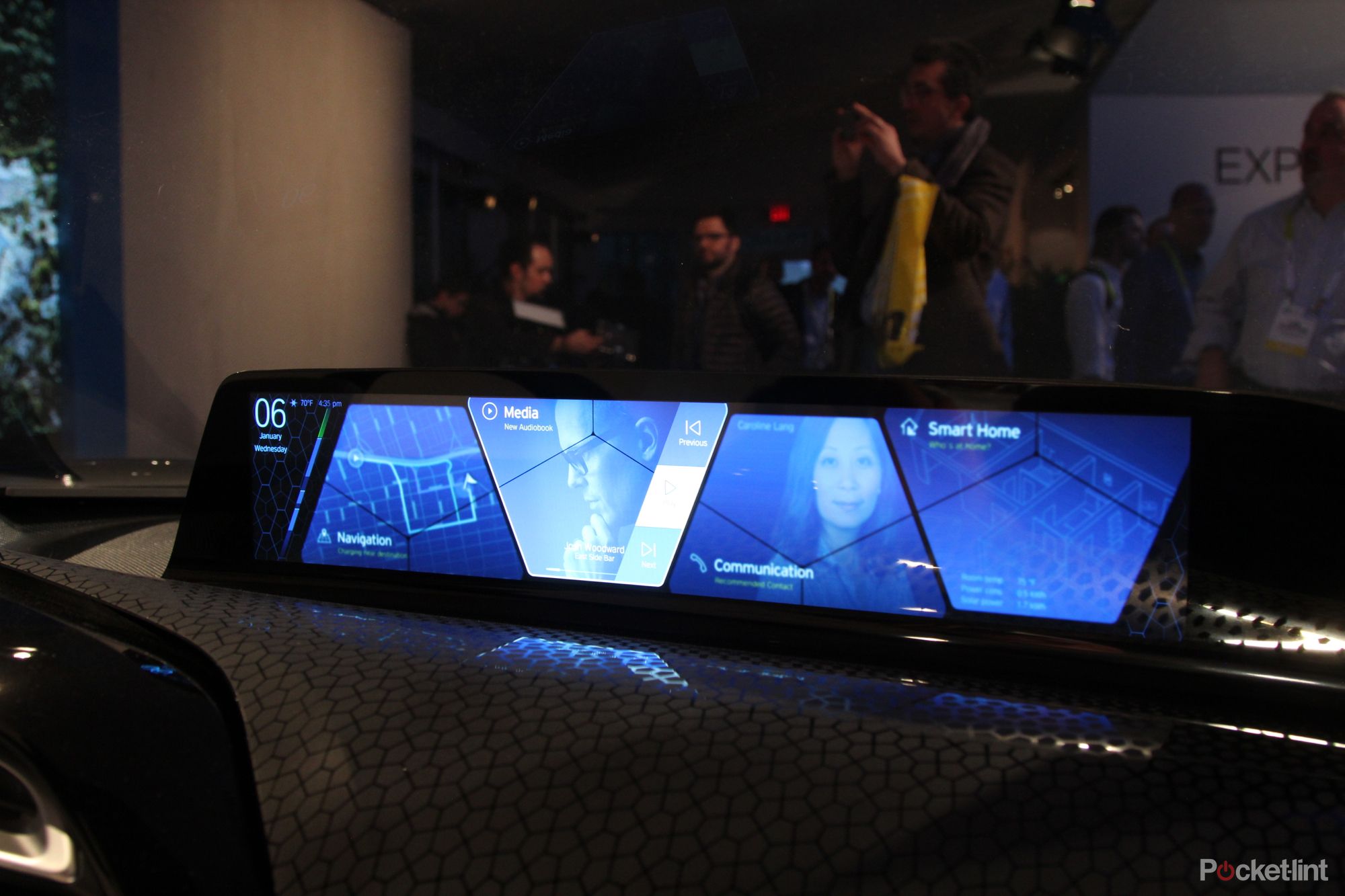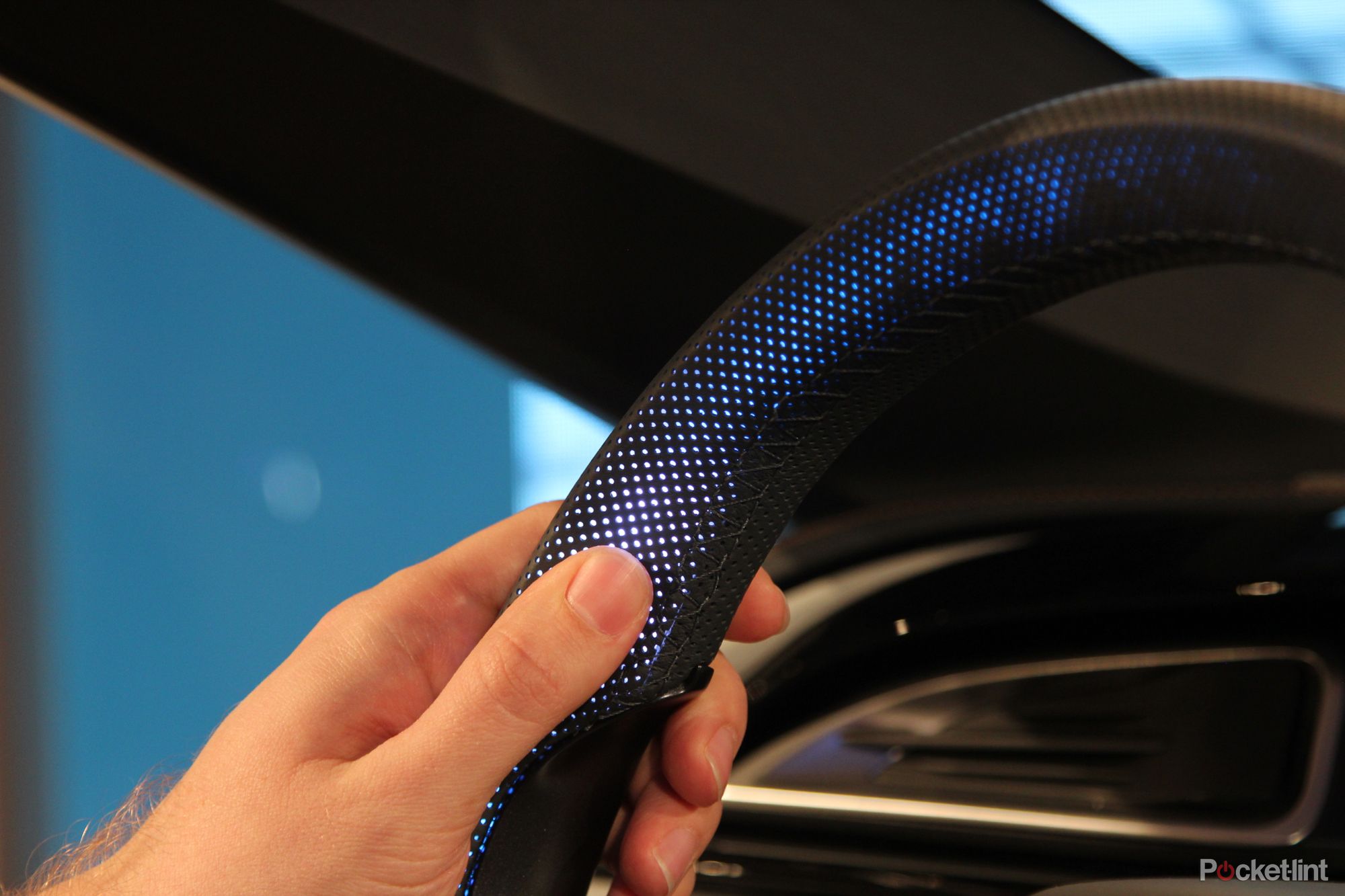BMW rolled out the i8 Spyder again here in CES. Again? Well, you’ll remember we drove the production i8 for the first time back in 2014 (it’s fair to say we loved it too). But in the run up to that car’s launch, BMW built several concept versions of the i8, including a concept version of an i8 Spyder, first shown in 2012.
Our quick take
Like others, BMW showed connected car technology ideas – the benefits of the car being connected to the cloud and other vehicles allowing it to help you avoid traffic, find food, etc.
It’s all worthy, but it didn’t really show anything new compared to every other manufacturer here at CES. But the interface design is special. Well integrated, not over-the top in design and easy to jump in and use off the bat, it’s worth watching what BMW does with this.
It’s all concept technology right now and BMW’s not committing to production any time yet. But it said that with Gesture control last year at CES, and nine months later we got the technology in the 7-Series. Watch this space.

Hands-on
| FOR | AGAINST |
|---|---|
|
|
|
Back to CES 2016 – and BMW’s used the i8 Spyder again because – with no doors and no roof – it’s all the easier to see the company’s latest thinking on how you might interact with a car in the future. Yes, that’s right, it’s got a very new and interesting interior – partly in the name of autonomous driving technology.
Like many concepts at CES, the I Vision has both you-as-driver and car-driving-itself modes. And like most other car makers, BMW sees this as necessitating some rethink when it comes to the interface design.
In the I Vision Future Interaction – heck, sorry we’re just going to refer to it as i8 Spyder from this point – what this means is that the wheel, seats, dashboard, cluster display, centre display and the centre console controller are all rethought.
The wheel and cluster bit are simple enough – BMW’s fitted a wheel with a honeycomb, semi-transparent pattern, which glows blue when it’s in autonomous mode and then pulses red at you when it wants you to take over the driving. Slide a large metal button on the face of the wheel to the right in order to activate the autonomous mode, where upon the wheel pulls itself into the dashboard and the seat reclines.
The cluster’s neat, because it’s not digitally overload like so many displays we’re seeing at this show. Instead it’s two screens in a layer, but the top screen is transparent, which means the display creates a simple hologram effect. It looks classy and it’s quite small, simply displaying map, speed and energy functions. Well done to the Munich team for the resisting the temptation to create skeuomorphic UI hell.
But it’s the passenger who gets the most interesting technology in this car – or rather, the passenger’s side of the dash. A 20-inch, 4k, curved display screen replaces BMW’s traditional 10-inch multimedia display – snaking its way across the dash top and showing (most of the time) four primary tiles. We’ll not dwell on what’s shown on these because let’s face it you can guess. But the way you interact with them is extremely interesting – it’s called “AirGesture” in BMW’s speak, and takes gesture control to the next step.
Three sets of sensors in the edge of the dash (one for the driver, two for the passenger) sense your hand’s presence, and you use your hand to virtually reach at the screen. It detects your hand, you select the tiles and then you can drag them about or ‘pull’ them out of the screen to select them, and ‘push’ them in to deselect. It sounds a bit odd, but of all the gesture tech we’ve seen and used recently (and there’s lots at this show) the AirGesture felt most natural and worked most reliably.
BMW’s not abandoning you in a gesture-only world either. Instead of its typical iDrive roundel, it’s hidden a touch pad under the (very thin) leather of the front part of the armrest – allowing you to select elements you pick up or put away by hand. The passenger gets their own hidden selector – a light glows down in the high-sided sill of the i8, by your leg – which your thumb falls naturally on as your hand grips the sill.


